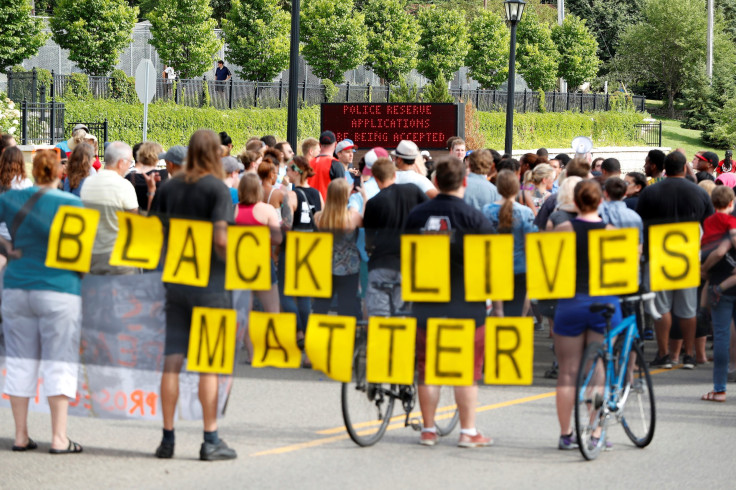Who Is Allen Scarsella? Black Lives Matter Minnesota Protest Shooter Defends Himself From Racist Accusations In Court

Allen Scarsella, a white man who allegedly shot into a Black Lives Matter protest in Minneapolis, Minnesota, took the stand Monday to defend himself in court.
The court case revolves around a shooting incident Nov. 23, 2015, when five black men were injured after Scarsella, 23, shot into a protest outside of a police department in Hennepin County, which is located roughly 13 miles south of Minneapolis' city center.
Scarsella and three others had gone to Minneapolis Police's Fourth Precinct to live-stream an ongoing protest after the death of Jamar Clark, a 24-year-old African-American who was shot and killed during a scuffle with police on Nov. 15, 2015.
Scarsella was charged with several felony counts including first-degree assault and riot but escaped being charged with a hate crime. Along with Scarsella, Nathan Gustavsson, 22, of Hermantown; Daniel Macey, 27, of Pine City, and Joseph Backman, 28, of Eagan, were charged with second-degree riot and aiding an offender.
However, during the trial Monday, Assistant Hennepin County Attorney Judith Hawley attempted to question Scarsella’s recounting of events, which described his actions to be motivated by the instinct of self-defense.
"I was really scared, the situation got totally out of control," Scarsella said, according to Star Tribune.
Hawley questioned Scarsella on why he didn't call 911 or report to the police after the shooting. Scarsella replied that one of the friends in his group, Backman, told him later that he had called 911. But the prosecutor made the all-white jury notice that Backman was not present with Scarsella at the time of the incident.
As the trial proceeded, Hawley attempted to use texts (already introduced in the trial) with racist messages sent by Scarsella to his friends as evidence to suggest that Scarsella was racially motivated to shoot at the protest.
The racist text messages ranged from one talking about reloading a gun "to kill eight black guys," to another that suggested attaching a Confederate flag on a gun to "get a chimp to chimp out so you could shoot him," and yet another one where Scarsella texted a friend about angering black people so he could shoot them.
"Once again you are texting about using a [gun] to kill black people?" asked Hawley.
"That's what we were talking about, yeah," Scarsella said, adding that the texts were "just words," and that they didn’t mean anything to him.
"So you can bandy around saying the N-word and it doesn't mean anything to you?" Hawley fired back.
"I believe in freedom of speech," he responded, adding that he was "ignorant" about racial issues. "I think that led me to the texts I sent," he said and added that they were "not meant to be taken seriously."
"They were private text messages between me and a friend, a friend who knew me very well…they weren't meant to offend anybody, offend any kind of general audience; they weren't meant to be taken seriously, even by us. None of those things directed my actions…I never acted on any of those things," Scarsella testified.
However, during cross-examination, Scarsella conceded that he didn't warn the protesters that he had a gun or that he was going to fire.
The defense is expected to continue its case Tuesday, following the testimonies heard Monday.
© Copyright IBTimes 2025. All rights reserved.






















